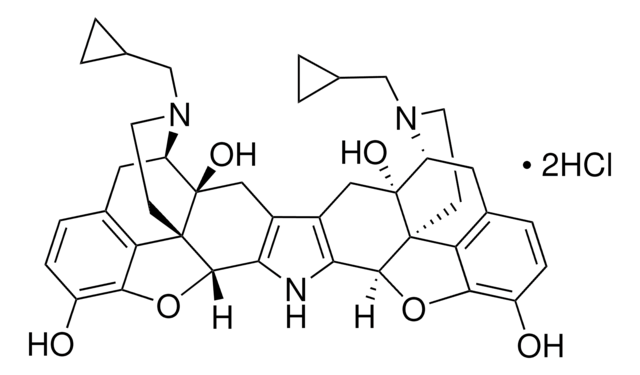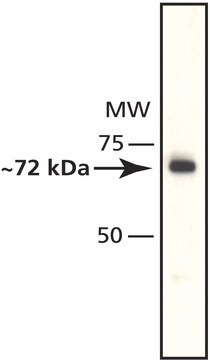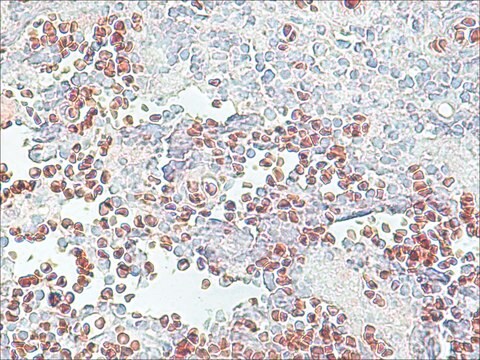H2663
Anti-Histone Deacetylase 2 (HDAC2) antibody, Mouse monoclonal
clone HDAC2-62, purified from hybridoma cell culture
About This Item
Produits recommandés
Source biologique
mouse
Niveau de qualité
Conjugué
unconjugated
Forme d'anticorps
purified immunoglobulin
Type de produit anticorps
primary antibodies
Clone
HDAC2-62, monoclonal
Forme
buffered aqueous solution
Poids mol.
antigen ~55 kDa
Espèces réactives
human, chicken, bovine, canine, rat, mouse
Conditionnement
antibody small pack of 25 μL
Technique(s)
immunohistochemistry: suitable
immunoprecipitation (IP): suitable
indirect ELISA: suitable
microarray: suitable
western blot: 0.25-0.5 μg/mL using total cell extracts from NIH3T3 cells
Isotype
IgG2b
Numéro d'accès UniProt
Conditions d'expédition
dry ice
Température de stockage
−20°C
Modification post-traductionnelle de la cible
unmodified
Informations sur le gène
human ... HDAC2(3066)
mouse ... Hdac2(15182)
rat ... Hdac2(84577)
Description générale
Spécificité
Application
- co-immunoprecipitation
- chromatin immunoprecipitation (ChIP)
- western blot
- immunohistochemistry
- enzyme linked immunosorbent assays (ELISA)
Actions biochimiques/physiologiques
Forme physique
Clause de non-responsabilité
Vous ne trouvez pas le bon produit ?
Essayez notre Outil de sélection de produits.
Produit(s) apparenté(s)
Code de la classe de stockage
12 - Non Combustible Liquids
Classe de danger pour l'eau (WGK)
WGK 2
Point d'éclair (°F)
Not applicable
Point d'éclair (°C)
Not applicable
Équipement de protection individuelle
Eyeshields, Gloves, multi-purpose combination respirator cartridge (US)
Certificats d'analyse (COA)
Recherchez un Certificats d'analyse (COA) en saisissant le numéro de lot du produit. Les numéros de lot figurent sur l'étiquette du produit après les mots "Lot" ou "Batch".
Déjà en possession de ce produit ?
Retrouvez la documentation relative aux produits que vous avez récemment achetés dans la Bibliothèque de documents.
Articles
Huntington's disease (HD) is an autosomal dominant, late-onset neurodegenerative disorder characterized by a selective neuronal cell death in the cortex and striatum leading to cognitive dysfunction, motor impairment and behavioral changes.
Contenu apparenté
Chromatin structure plays a fundamental role in regulating processes that take place on the DNA, such as transcription, replication, and recombination, all of which occur on nucleosomal templates. Therefore, mapping the position of histones selectively modified and histone variants or non-histone components of chromatin in specific DNA sequences, can provide valuable insights into how these proteins (and their modifications) function in a chromatin context.
Notre équipe de scientifiques dispose d'une expérience dans tous les secteurs de la recherche, notamment en sciences de la vie, science des matériaux, synthèse chimique, chromatographie, analyse et dans de nombreux autres domaines..
Contacter notre Service technique







